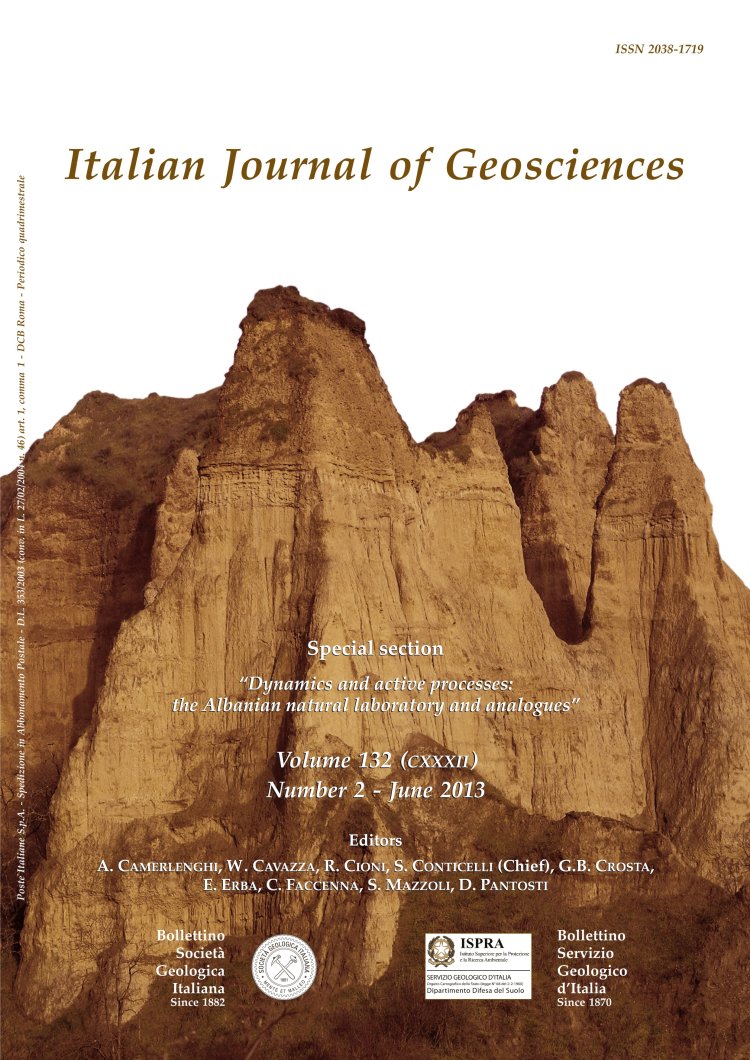
Sharing data and interpretations of geological maps via standardised metadata and geoportals
Gianni Balestro(*), Fabrizio Piana(**), Gianfranco Fioraso(**), Gianluigi Perrone(*) & Sergio Tallone(**)
(*) Dipartimento di Scienze della Terra - Università degli Sudi di Torino, Via Valperga Caluso, 35 - 10125 Torino. Tel. +39 011 6705865;
Fax +39 011 6705339. E-mail: gianni.balestro@unito.it
(**) C.N.R. - Istituto di Geoscienze e Georisorse, Unità di Torino, Via Valperga Caluso, 35 - 10125 Torino.
DOI: https://doi.org/10.3301/IJG.2012.35
Volume: 132 (2013) f.2
Pages: 254-262
Abstract
The so-called "Informatics-revolution" and related Information Technology (IT) are a chance to increase spreading of geoscientific knowledge and transfer of information represented in geological maps, but, in order to actually take advantage of systems-aided communication, geological information has to be specifically harmonized and standardized. New methodological and technological approaches in the representation and communication of geological maps are enabled by widespread use of Geographic Information Systems (GIS) and web mapping services (e.g. the WMS standard protocol) that i) allow sharing and spatially discovering maps, and ii) support interchange of data amongst different systems, experts and communities. Since sharing and retrieving of geological maps through geoportals and spatial data infrastructures spread, problems about semantic heterogeneity and different structures of geological databases (DB) come out. A strategy to meet needs of interoperability consists of integrating geological map DB by standard languages and meta-information, and is carried out by the INSPIRE (Infrastructure
for Spatial Information in Europe) European directive that defines two relevant guidelines (the "Data Specification on Geology" and the "Metadata Implementing Rules") usable to encode and share standardized geological information. An example of application of these standards is the Geoportal of the Torino Unit of the Institute for Geosciences and Earth Resources, where field data, map features and peculiar geological interpretations, extracted from GIS DB of geological maps, are given as single datasets and homogeneously described through specific metadata classes such as the Abstract sub-element and the Lineage sub-element. The two given examples of metadata compilations, referring to the Lis-Trana Fault and to the block stream deposits occurring in the "Torino Ovest" geological map (sheet n.155 of the Geological Map of Italy at 1:50,000 scale), highlight that standardisation is an opportunity i) to better organize geological information, ii) to give information about quality of data, and iii) to specify intended meaning of interpreted features.
Since metadata allow bringing out in an explicit format geological concepts and interpretations, reading of maps is improved and geoportals are actually a new method for encoding and sharing geological maps.
Keywords
Get Full Text